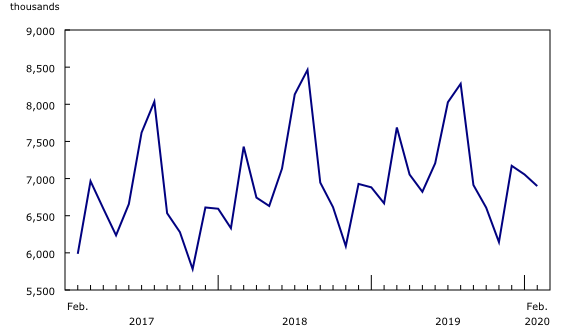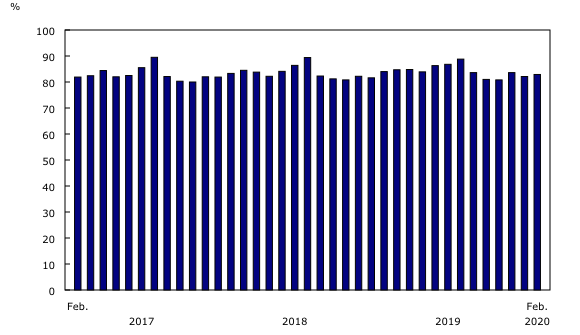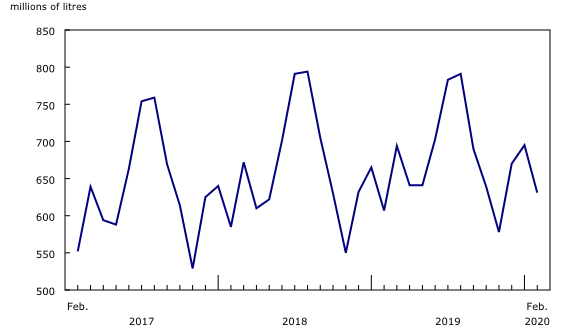Monthly civil aviation statistics, February 2020
Archived Content
Information identified as archived is provided for reference, research or recordkeeping purposes. It is not subject to the Government of Canada Web Standards and has not been altered or updated since it was archived. Please "contact us" to request a format other than those available.
Released: 2020-05-07
Canada's airline industry is grappling with an unprecedented reduction in demand as the government responds to the coronavirus (COVID-19) pandemic by imposing travel restrictions and border closures.
As a result of the COVID-19 pandemic, the Government of Canada restricted flights between Canada and China in late January. In early March, Air Canada cancelled flights to Hong Kong and Italy. By the end of the month, Canadian airlines had gradually suspended most transborder and other international services in response to additional travel restrictions put in place by the Canadian government.
Carriers slashed scheduled seat capacity by as much as 85% to 90% and cut their workforces. However, the airlines managed to avoid deep employment cuts with the use of the 75% Canada Emergency Wage Subsidy to help keep flight attendants and pilots on payroll. Regardless, the airline industry faces severe financial challenges, as it is earning no revenue but still has operating costs (e.g., aircraft maintenance and lease) and debt, and is looking for a public, industry-specific aid package to survive this pandemic.
While the full impacts of this pandemic on the industry will become more evident in March and April, they were not yet evident in February.
The seven Canadian Level I air carriers flew 6.9 million passengers on scheduled and charter services in February 2020, up 3.5% compared with February 2019, when there were only six carriers. This follows a 2.5% increase in January 2020 and represents the fourth year-over-year monthly increase.
The number of air carriers increased from six in 2019 to seven in 2020, as one Level II air carrier was reclassified to Level I.
Traffic edged down 0.6% year over year to 17.1 billion passenger-kilometres in February. Capacity edged up 0.8% to 20.6 billion available seat-kilometres. This resulted in a lower passenger load factor in February (82.9%) compared with the same month a year earlier (84.0%), as capacity increased but demand for travel declined slightly.
On average, each passenger travelled 2,477 kilometres, down 4.0% from February 2019. This decrease in average distance may reflect—in part—the suspension of long-haul flights to China in late January.
The volume of turbo fuel consumed increased 4.0% to 631.4 million litres, while the number of flying hours rose 1.1% to 184,000 hours.
Operating revenue for these airlines totalled $1.9 billion in February, up 4.5% from the same month a year earlier.
Note to readers
The Monthly Civil Aviation Survey covers all Canadian Level I air carriers: Air Canada (including Air Canada Rouge), Air Transat, Jazz, Porter, Sky Regional, Sunwing and WestJet (including Swoop, WestJet Encore and WestJet Link).
The average passenger trip length is obtained by dividing the number of passenger-kilometres by the number of passengers. Trips across Canada and across the globe are included in this calculation.
Data in this monthly release are not seasonally adjusted.
Data for February 2019 have been revised.
Contact information
For more information, or to enquire about the concepts, methods or data quality of this release, contact us (toll-free 1-800-263-1136; 514-283-8300; STATCAN.infostats-infostats.STATCAN@canada.ca) or Media Relations (613-951-4636; STATCAN.mediahotline-ligneinfomedias.STATCAN@canada.ca).
- Date modified:






